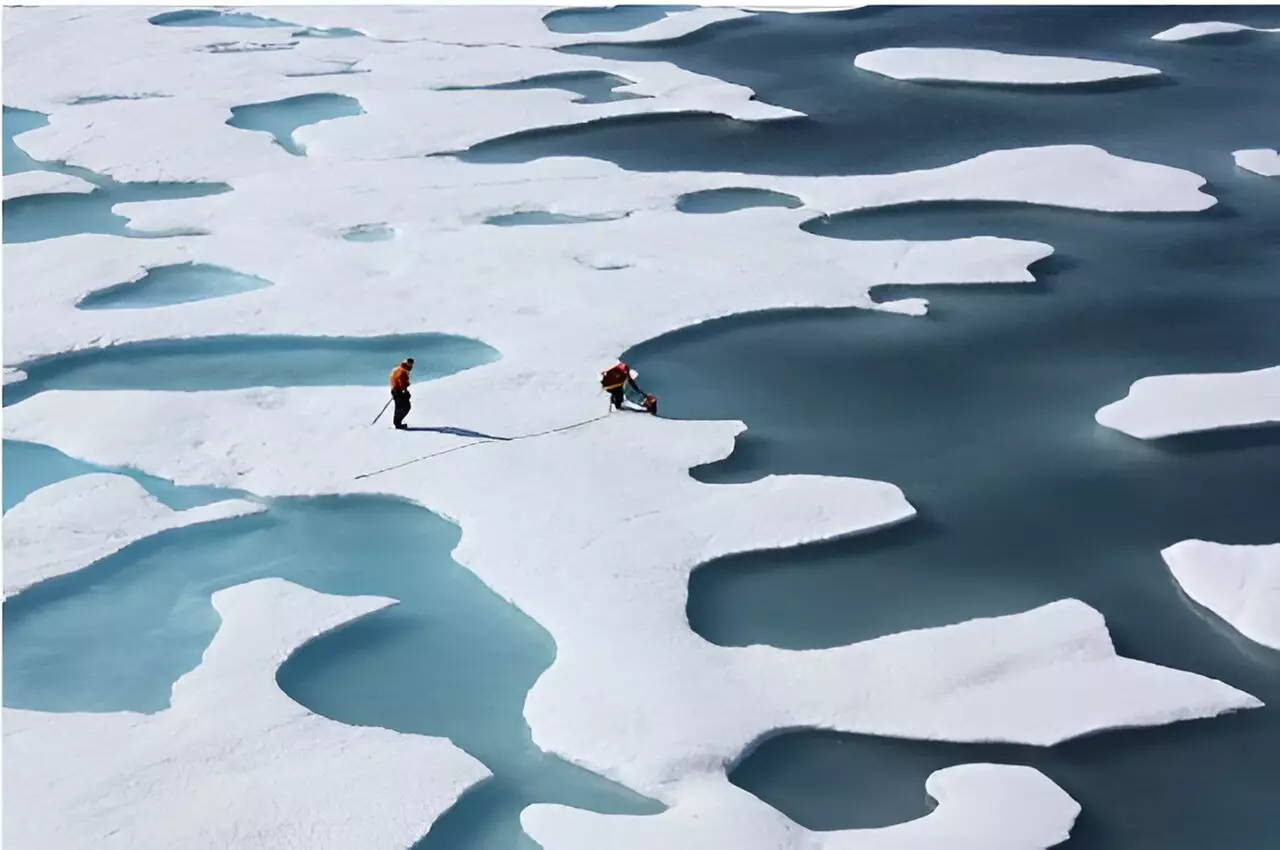Recent studies highlight a troubling shift in our planet’s climate dynamics, particularly in the Arctic and Antarctic regions. Research spearheaded by the University of Michigan illustrates that the cooling power of sea ice has substantially diminished by nearly 25% in the Arctic since 1980, with global losses nearing 15%. This decline can be attributed to the thinning and melting of sea ice—an occurrence that not only affects the ice itself but also exerts an extensive influence on the Earth’s climate.
These revelations stem from intricate satellite measurements that tracked changes in cloud cover and the solar radiation reflected by sea ice over the past four decades. The findings reveal a stark inconsistency: while the annual average sea ice area has decreased, the drop in cooling capability is approximately double that of the area loss. This alarming trend points towards an increasingly unstable climate, as the consequences extend well beyond the polar regions, reverberating throughout the entire planet.
Re-evaluating Climate Models
Mark Flanner, a professor of climate and space sciences, emphasizes a critical point: traditional climate simulations often require a century’s worth of data to understand how melting sea ice influences climatic conditions. In this context, the advances in satellite technology have been significant. They provide a growing body of evidence that allows for a more immediate assessment of the impacts of sea ice decline, thereby refining existing climate models.
As a result, the accelerating rate of sea ice loss in the Arctic has prompted scientists to reconsider how quickly these changes can influence global climate. The implications are staggering—what was once considered a gradual onset of climate effects is proving to be a much more urgent and pressing threat.
Antarctica: From Stability to Crisis
Contrary to the anticipated resilience of the Antarctic ice cover, recent developments have challenged this narrative. For nearly a decade, from 2007 to the mid-2010s, Antarctic sea ice appeared to maintain its cooling effectiveness. However, the catastrophic melting of ice larger than Texas in 2016 marked a dramatic turning point. The stability that once characterized Antarctic sea ice has succumbed to the effects of climate change, leaving the region reeling from consequential losses.
The subsequent years have seen a significant decline in Antarctic cooling power, contributing further to global warming feedback mechanisms. New studies indicate that since 2016, the challenges facing Antarctic ice have intensified. Ice that remains is degrading in quality, with conditions less favorable for reflecting solar radiation, resulting in a compounded effect on the climate system.
The Ripple Effect of Loss
The diminished reflectivity of remaining sea ice has profound implications: thinner, wetter ice punctuated by melt ponds not only absorbs more solar radiation but also accelerates warming trends. This phenomenon is most notable in the Arctic, albeit the study suggests that similar dynamics could emerge in Antarctica.
Alisher Duspayev, a doctoral student involved in the study, underscores this shift, explaining that failure to consider these alterations in radiative effects may lead to underestimating the total energy absorbed globally. It’s a vital observation that challenges existing models, emphasizing the necessity of incorporating these factors to derive accurate predictions about our shifting climate.
Planning for a Warmer Future
As these findings ripple through the scientific community, they become critical considerations for climate change adaptation strategies. The urgency to integrate new data about sea ice’s cooling power and the associated feedback mechanisms into climate models cannot be overstated. Researchers are actively working on platforms that will provide real-time updates as new satellite data emerges, ensuring that the climate science community remains informed.
The weight of these changes necessitates a rethinking of how governments and organizations plan for climate-related impacts. Maintaining an awareness of the rapid cooling loss in the cryosphere will be essential for developing effective strategies to mitigate future risks. As the planet continues to grapple with the consequences of climate change, proactive and informed measures become not only necessary but imperative for safeguarding our global climate system.

